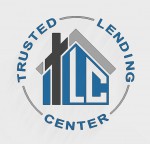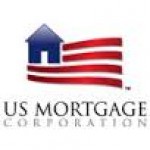fha 203k loan qualifications
 Steven Ceceri (123LoanYes)
Steven Ceceri (123LoanYes)
#12 ranked lender in Rhode Island - 723 contributions
I can send you a flyer on this if you'd like. Email me offline with your email address. Thank you!
 Barb Lanis (BarbLanis)
Barb Lanis (BarbLanis)
#69 ranked lender in Illinois - 679 contributions
Yes, I would be pleased to send you information regarding 203K loans and what the qualifications are for this loan program. Please feel free to email me at barb.lanis@1amllc.com
 William J Acres (William_Acres)
William J Acres (William_Acres)
#74 ranked lender in Arizona - 8,728 contributions
Here's HUD's link to 203K info.. Just copy and paste into your browser.. http://portal.hud.gov/hudportal/HUD?src=/program_offices/housing/sfh/203k/203kabou.....I'm a Broker here in Scottsdale AZ and I only lend in Arizona. If you or someone you know is looking for financing options, feel free to contact me or pass along my information. 480-287-5714 WilliamAcres.com
 Anthony Piccone (apiccone)
Anthony Piccone (apiccone)
#96 ranked lender in New Jersey - 17 contributions
Our firm is not licensed in your state but I would be happy to answer any questions for you offline.
 Linda Wintersteen (Linda123)
Linda Wintersteen (Linda123)
#63 ranked lender in Arizona - 1,256 contributions
please email me at yourloanpartnerforlife@live.com linda give me a outline of your questions and concerns..
 Kimberly Lawson (kilawson)
Kimberly Lawson (kilawson)
#54 ranked lender in Ohio - 150 contributions
Here's a whole lot of information. I should preface this by saying whomever you go through will have add'l guidelines. I've tried to put the most generic of information/terms that are followed company to company regardless where you are located. -- I do recommend that you contact a local mortgage broker or mortgage banker. They will be able to help you with this type of financing. --> Further, there are two different 203k programs: a full blown 203k program that few bankers/brokers offer which enables you to finance more than 35k in repairs, energy efficient appliances and windows and more. There's also a 203k streamline program. This enables you to finance 35k and less. The guidelines are almost the same. You'll also find there is a difference if you want just to refinance or if you plan to purchase a home with/during the transaction. For 203k streamline (<35k): If you were purchasing, you could purchase a home AND include the cost of the rehabilition through a single mortgage/finance. The maxium loan-to-value is 96.5% (the max loan amount will vary by county/state.) There are also extra guidelines/restrictions for if it's energy efficient or high balance. HOW TO CALCULATE MAX MTG AMT: first, a max mtg worksheet is used plus consideration of location. Further, you'd have to try to consider what the after-repaired-value would be. Expenses that may be included in the total amt of improvements, not to exceed $35,000 (including inspection fees permits, and other loan closing costs). Cash out is not allowed. Which means any loan proceeds not advanced, must be applied to the principal balance of the mortgage. Borrower must certify that they do not have a conflict of interest with any party to the transaction. Expenses eligible to be included in the cost of rehabilitation: are material, labor, overhead and construction profit (noted in each work item), plus expenses related to the rehabilitation such as permits, fees, inspection fees by a qualified home inspector (for example, a member of the American Society of Home Inspectors), licenses, inspection fees during construction by a HUD accepted inspector, lien protection fees and title update fees. The cost of rehabilitation may also include: the supplemental origination fee and the discounts which the borrower will pay on that potion of the mortgage proceeds allocated to the rehabilitation.Contractor(s) Requirements: All loans require that all borrower-selected contractors sign the Homeowner/Contractor Agreement before closing. All contractors must be licensed if required by state or county. The underwriter must review the following items pursuant to the proposed contractor: Credentials Work experience Client references from contractor's prior work Borrower must sign the FHA 203(k) Rehabilitation Agreement prior to closing. Rehabilitation Period: Rehabilitation construction must begin within 30 days of closing, must not cease for more than a 30 day period, and all work must be completed within six months of closing.Self-Help Requirements: Self-help arrangements in which the borrower is performing some or all of the work items are strongly discouraged-unless the borrower's ability to perform the work in a competent, timely, and workmanlike manner is self-evident and easily documented. The self-help option is not allowed for any project for which permits will be required, unless the borrower is a licensed contractor working in the specific field necessary for the rehabilitation. Self-help arrangements must also meet the following requirements: Borrowers doing their own work must sign a Self-Help Agreement and fully understand that construction must be completed within six months of loan closing or a shorter period, as determined by your lender's underwriting.* Maintain records documenting actual costs and lien waivers in the same way that a general contractor would.* Bids from licensed contractors must also be supplied as back-up. * Provide cash reserves sufficient to fund rehab costs until the final disbursement is processed. * The borrower must understand the 203(k) program at the construction stage and the risks inherent in rehabilitation projects. The borrower must sign the FHA 203(k) Rehabilitation Agreement prior to closing.* The Self-Help option is not allowed for properties in the State of Texas.Appraisal Requirements: All appraisals for FHA loans must be completed by a HUD-approved appraiser.The loan-to-value is based on the lesser of: *The sales price or "as is" appraised value plus borrower paid repairs minus sales concessions, or * 110% of "as completed" appraised value. The appraisal report must provide an "as completed" appraised value that estimates the value of the property after completion of the rehabilitation work. The contractor's bid or borrower's work write-up must be available for the appraiser to use in order to determine the "as completed" value. In order to determine the maximum mortgage amount, the FHA 203(k) valuation analysis consists of two separate determinations of value.As Completed/After Rehabilitation Value: The expected market value of the property based on the proposed rehabilitation and/or improvements. Reinspection: The Lender will order an inspection by the original appraiser. The appraisal management company will coordinate the inspection directly with the borrower.CREDIT REQUIREMENTS: will vary by lender. Since I don't know the lender you'll work with, I'll try to give you general guidelines: Credit: Credit Scores: The minimum credit score may not be lower than 640 regardless of AUS approval. A tri-merge bureau is required on all loans; the lowest qualifying score of all applicants is used to qualify and each borrower must have at least two credit scores. The qualifying score is the lower of 2 or the middle of 3 scores and must be reviewed for each borrower. Valid Credit Score: For a credit score to be considered valid, the score must be generated from a minimum of (3) trade lines that have been evaluated for at least 12 months. The trade lines do not need to be currently active but require some activity within the last 24 months. For borrowers with credit scores of 640 or higher that do not have at least 3 trade lines each with a 12 month history, the credit score will not be considered valid and the loan is ineligible for the 203(k) program. Credit Profile: If the borrower's credit profile consists of only collection accounts, judgments or other adverse credit, the borrower is not eligible. This applies regardless of credit score or automated underwriting approval (automated underwriting is an automated system the banker/broker will run) . Housing Payment History: Mortgage Payment History: 0 x 30 in the last 12 months. For borrowers with mortgage delinquency beyond the most previous 12 months, it is the underwriter's responsibility to carefully review and determine the borrower's credit worthiness. Rental Payment History: Rental payment history is required per the AUS findings. The mortgage payment history may be documented by a VOM (if you rent froma management company) or provide the rating per the credit report. Qualifying Ratios: FHA uses the Effective Gross Income instead of Net Effective Income to qualify loans. The ratios of 31%/43% may be exceeded on AUS-approved transactions per the grid below. For loans that exceed 31/43%, significant compensating factors must be present as set forth in the HUD Handbook and may not exceed the ratios per the grid below.When ratios exceed 31%/43% ratios, the underwriter must use Form 92900 LT to explain the reason and list the compensating factors. Even then you cannot typically exceed a 50% back end ratio. Closing Costs: Banker/broker may charge and collect from borrowers those customary and reasonable costs necessary to close the mortgage. Except for discount points, these fees may also be used to meet the borrower's minimum investment requirement. Borrowers may not pay a tax service fee and aggregate charges may not violate FHA's tiered pricing rules. The following additional guidelines are specific to the 203(k) program: Supplemental origination fee: When the mortgage involves insurance of advances which is the case with all 203(k) loans, the borrower will be charged a supplemental origination fee. The fee is calculated at the greater of, 1.5% of the portion of the mortgage allocated to rehabilitation, or $350, and is in addition to any origination fee being charged. * As of 4/26/2011, loan origination fees are no longer capped at 1%. Any fees charged to the borrower must be fair, reasonable and customary charges for all origination services. Refer to ML 2011-18. * Discount points: Discount points may be financed on the rehabilitation portion only (except in Texas) and they may not exceed the amount of discount on the non-rehabilitation portion. On a purchase transaction, discount points above the rehabilitation portion may be charged but not financed. * If you have questions about closing costs, contact your local banker/broker. **** Minimum Cash Investment: The borrower must make a minimum cash investment of 3.5% of the lesser of the appraised or sales value. This amount is in addition to any borrower closing costs.*** NOTE: For borrowers qualifying under the Energy Efficient Mortgage (EEM), Good Neighbor Next Door (GNND) or HUD REO program, the borrower's minimum cash investment may vary. Refer to your banker/broker who can explain their guidelines for additional information. **** Sales and Financing Contributions: Sellers, or other interested parties such as real estate agents, builders, developers, etc., or a combination of parties are permitted to contribute up to 6% of the property sales price toward the buyer's actual closing costs, prepaid expenses, discount points and other financing concessions. Closing costs normally paid by the borrower are considered contributions if paid by the seller. ** Each dollar exceeding FHA's 6% limit must be subtracted from the property's sales price before applying the appropriate loan-to-value ratio. **** Cash Reserves: Cash reserves are not a requirement for FHA loans except in the scenarios described below. Generally cash reserves are used as a Compensating Factor when approving an FHA loan with a debt ratio that exceeds guidelines. In this case, a minimum of 3 months PITI will be considered as a Compensating Factor. Gift funds, cash proceeds from the refinance and equity in another property are not acceptable sources for documenting cash reserves.*** Scenarios with Reserve Requirements: 3-4 unit properties: 3 months PITI after closing are required. Gifts are not an acceptable source. *** Projected Income: When qualifying a borrower with projected income, the borrower must have sufficient cash reserves to support the mortgage payments and all other obligations during the interim period between loan closing and the start of employment. ** Funding the Loan, Including Initial Draw: The full loan amount must be funded at closing. The first draw of the rehab funds will be made at closing and will be disbursed to the homeowner and the contractor and will be handled through escrow/title. The first draw will be 50% of the total cost of the repairs on line B1 on the Maximum Mortgage worksheet. If there are multiple contractors being used, 50% of the cost of the repairs for each contractor will be disbursed at closing. The broker/banker will set up an interest-bearing repair escrow account which is insured by the Federal Deposit Insurance Corporation (FDIC), to fund the remaining disbursements for improvements.Any interest earned is applied as a principal reduction to the loan, along with any other unused funds. Your banker/broker will handle all project inspections and all remaining rehabilitation disbursements. Remaining Draw Process: After the loan is set up in the servicing system: * The borrower will receive a "Welcome" package that will explain how the final disbursement works and will provide them with contact information. * A final invoice from the contractor/vendor must be submitted in order to disburse final funds. If the invoice shows the payment has been received in full, the funds go to the borrower. If the invoice shows a balance due, a two-party check will be disbursed. * For borrowers doing the work themselves, a self-help agreement must be in the file before the funds are disbursed and the check is made out directly to the borrower. * For borrowers working with a contractor, a W-9 must be provided to set up the contractor in the system. A two-party check is made out to the borrower and the contractor and sent to the borrower. * The balance of rehabilitation funds will only be disbursed upon completion of ALL work. * Lender will order an inspection by the original appraiser. The appraisal management company coordinates the inspection directly with the borrower.**** Common Missing Items That Will Cause Draw DelaysMissing W-9s. These must be completed and signed by every contractor working on the project. * Missing or incomplete Homeowner/Contractor Agreement. * A fully executed Self-Help Agreement. * 203(k) Streamline Maximum Mortgage Worksheet is missing applicable signatures. * 203(k) Borrower acknowledgement is missing. Again, I would contact your local banker/broker to discuss the add'l, specific guidelines that will apply. Best of luck to you!!! * Best to you in your search, Kimberly Lawson Kimberly.Lawson@fpfmail.com NMLS: 5601 OH.LO.004495.000 First Priority Financial, Inc. 748 N Court St Ste 201 Medina, OH 44256 MBMB.850147.001 NMLS: 3257 If you're interested in obtaining financing in Ohio, visit my website www.kimlawsonloanofficer.com * Or by giving me a call 888-659-3848.
 Steve Azarch (sazarch)
Steve Azarch (sazarch)
#18 ranked lender in Tennessee - 93 contributions
Klawson gave you a lot of good 203k information.I wish I could help you but I am not licensed in your state.
 Joe Metzler (JoeMetzler)
Joe Metzler (JoeMetzler)
#17 ranked lender in Minnesota - 4,852 contributions
Hi... I am in St Paul. Visit my web site at http://joemetzler.com/fhaloans.htm - then call to discuss your options.
 Andrew Alfonso (CashCow)
Andrew Alfonso (CashCow)
#43 ranked lender in Florida - 271 contributions
I happen to have the exact UNDERWRITING GUIDELINES handy and ready for you. Email me offline with your email address. Thank you! andrew@doubleamortgage.com
 Phil Dumouchel (PhilDu)
Phil Dumouchel (PhilDu)
#32 ranked lender in South Carolina - 2,249 contributions
The process is very similar to any other loan, with the addition of the contractor(s) that you use to make improvements and repairs to the property. The appraisal is based on the value of hte home after the repairs/improvements are done. Allow a little extra time to close one of these loans. Many lenders may ask for a little stronger qualifications (credit score and making sure you have some reserves) to approve a 203k loan. NOTE: There is also a conventional renovation loan which is usually a better option for more well qualified borrowers who are able to put at least 5% as a downpayment. Either program can be used for either purchase OR refinance combined with improvements of a property.
 Peter Botros (PeterBotros)
Peter Botros (PeterBotros)
#70 ranked lender in New York - 895 contributions
Great program. Visit my profile for more info.
Ask our community a question.
